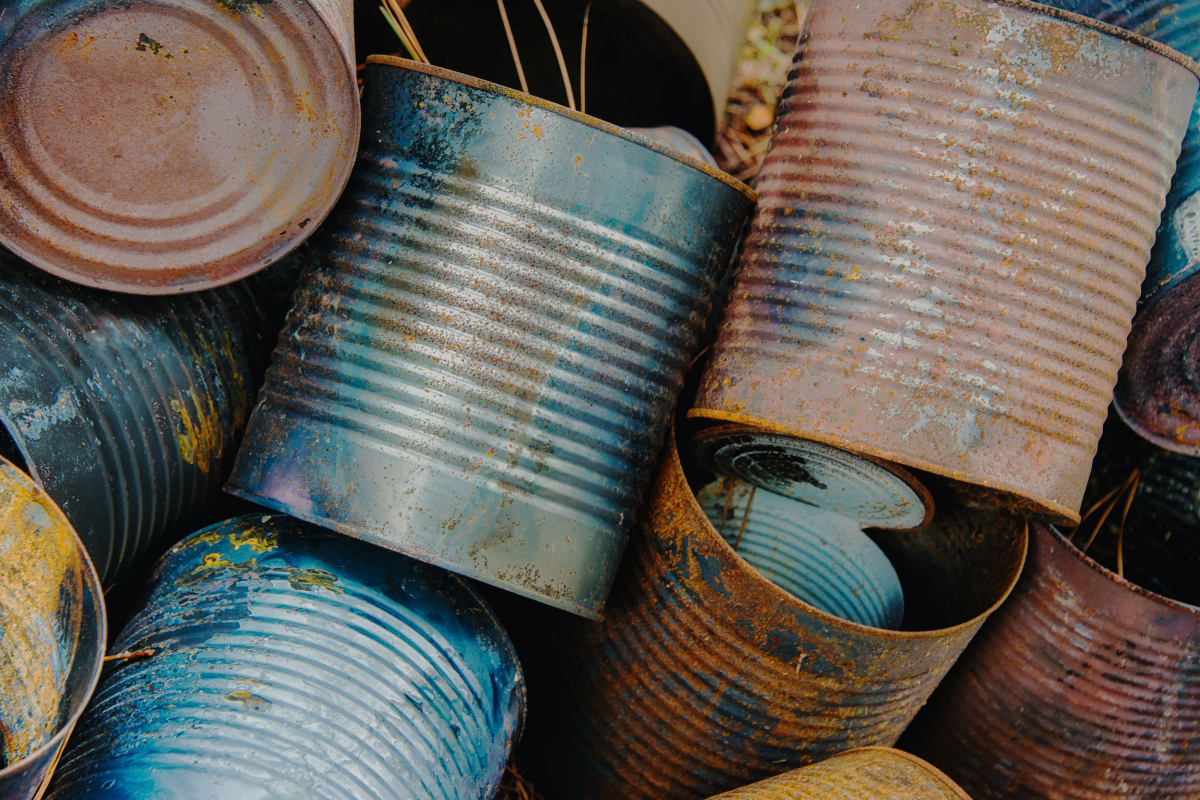Under Brian Mock’s visionary gaze, unwanted nuts  and bolts, keys, springs, gear shifts, chains, butter knives, bike parts and more become majestic lions, mardi gras masks, loyal dogs, cowboy boots, grizzly bears and portraits showing facial expressions. All are life-size—some even larger than life (he just finished up a 7.5 ft guitar for the Hard Rock Hotel in Dublin and previously made a 9 ft one for a hotel in Nashville); and all are meticulously crafted. Based just outside Portland, Oregon, Mock taught himself to weld in the ’90s after years of drawing, painting and woodworking. A tight budget forced him to practice on scrap metal, but he soon found unique inspiration in needing to mine what was available rather than dashing to the store. Plus, his work was keeping “junk” out of the landfills. When exploring his up-cycled creations, you’ll notice all the bits and pieces, and imagine how they were formerly used, and then, how they were discarded to rust and pollute our soils and waterways. Mock has salvaged 20–30 tons of metal thus far, making every piece burst with life again. —Jane Ratcliffe
and bolts, keys, springs, gear shifts, chains, butter knives, bike parts and more become majestic lions, mardi gras masks, loyal dogs, cowboy boots, grizzly bears and portraits showing facial expressions. All are life-size—some even larger than life (he just finished up a 7.5 ft guitar for the Hard Rock Hotel in Dublin and previously made a 9 ft one for a hotel in Nashville); and all are meticulously crafted. Based just outside Portland, Oregon, Mock taught himself to weld in the ’90s after years of drawing, painting and woodworking. A tight budget forced him to practice on scrap metal, but he soon found unique inspiration in needing to mine what was available rather than dashing to the store. Plus, his work was keeping “junk” out of the landfills. When exploring his up-cycled creations, you’ll notice all the bits and pieces, and imagine how they were formerly used, and then, how they were discarded to rust and pollute our soils and waterways. Mock has salvaged 20–30 tons of metal thus far, making every piece burst with life again. —Jane Ratcliffe
What drew you to this work?
I’ve always been a resourceful person, so it was natural for me to gravitate towards a profession in recycled materials. I find the items so interesting to work with–knowing that they had a purpose and a story before becoming something completely new in the art.
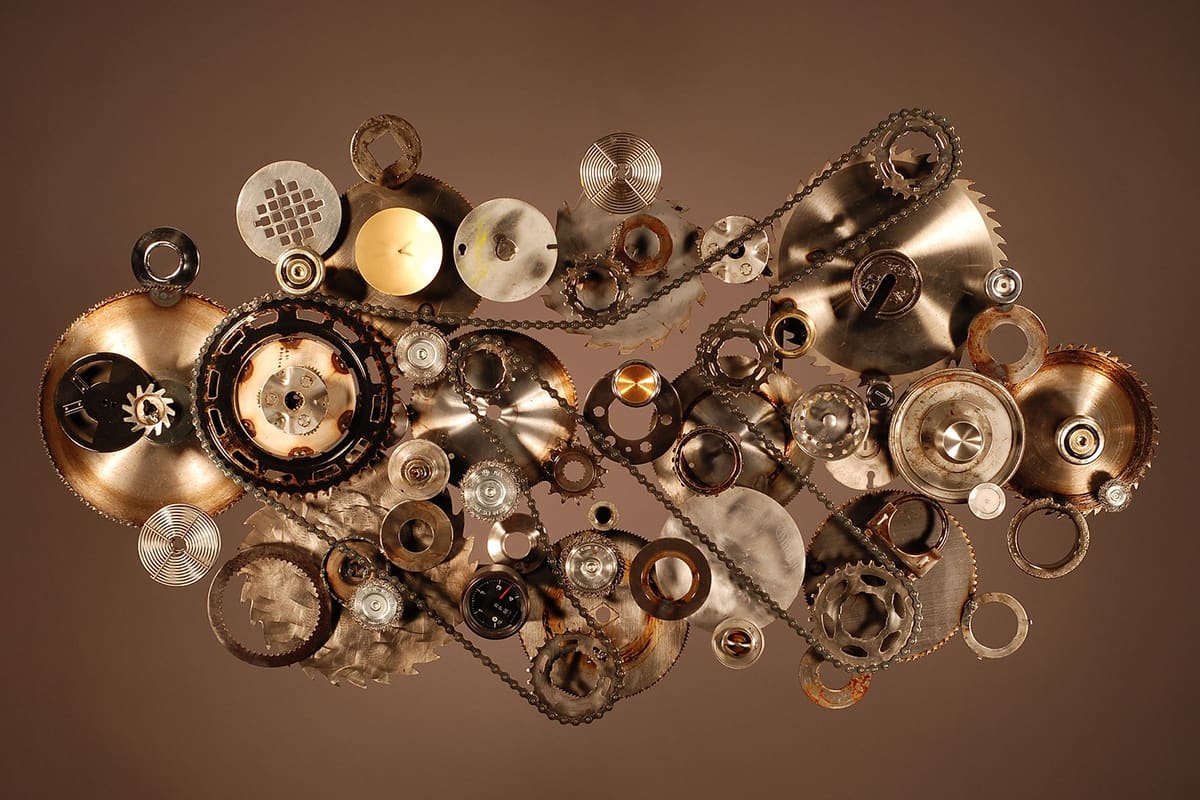
Do you first make a sketch and then look for scrap metal that fits the design? Or do you gather pieces and let them guide you?
I usually start with a rough sketch to give me some direction on measurements, but other than that, I let the pieces guide me–that’s a great way to put it. I have a large inventory to choose from, and keep lots of bins on hand to rummage through as I go, grabbing pieces and fitting them together like a jigsaw puzzle.
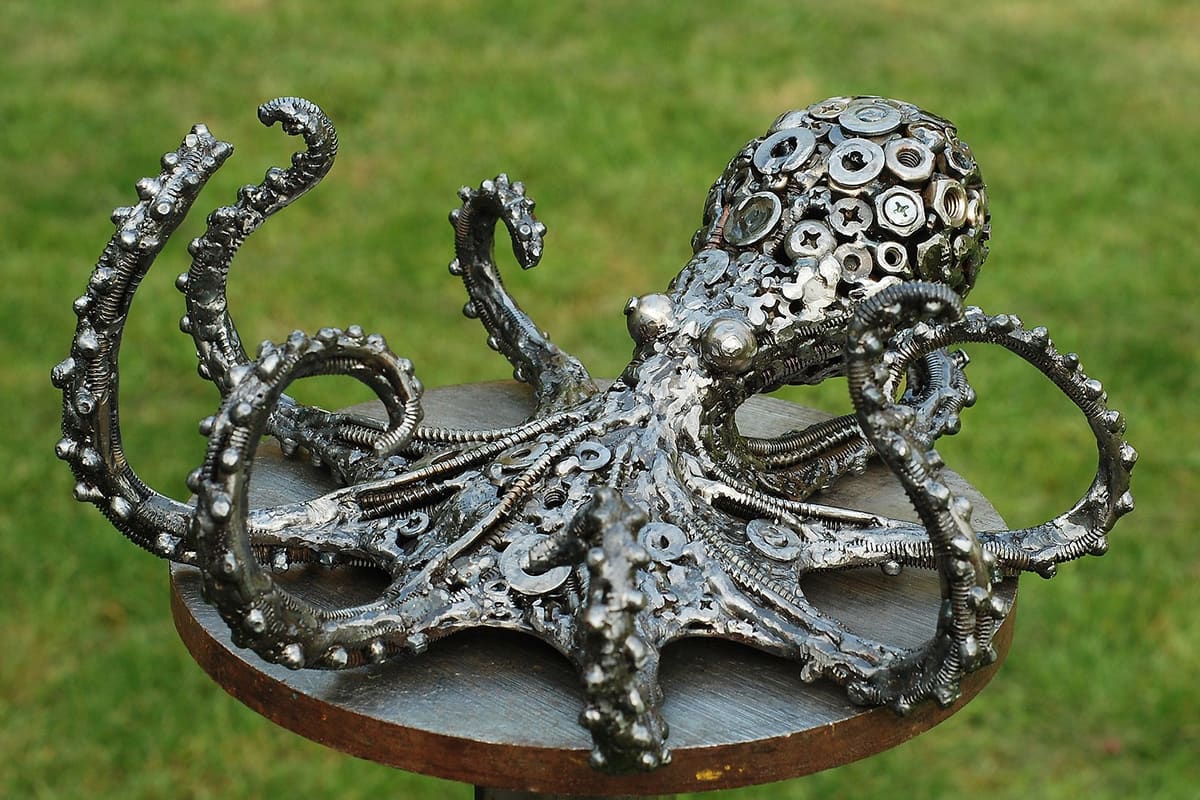
Where do you source your materials?
I’ve been collecting for years from local machine and auto shops that give me free access to their dumpsters, from people who are looking to offload garages full of grandpa’s old stuff, and occasionally, from scrapyards. But almost all of the material I have has been donated, which I’m extremely grateful for.
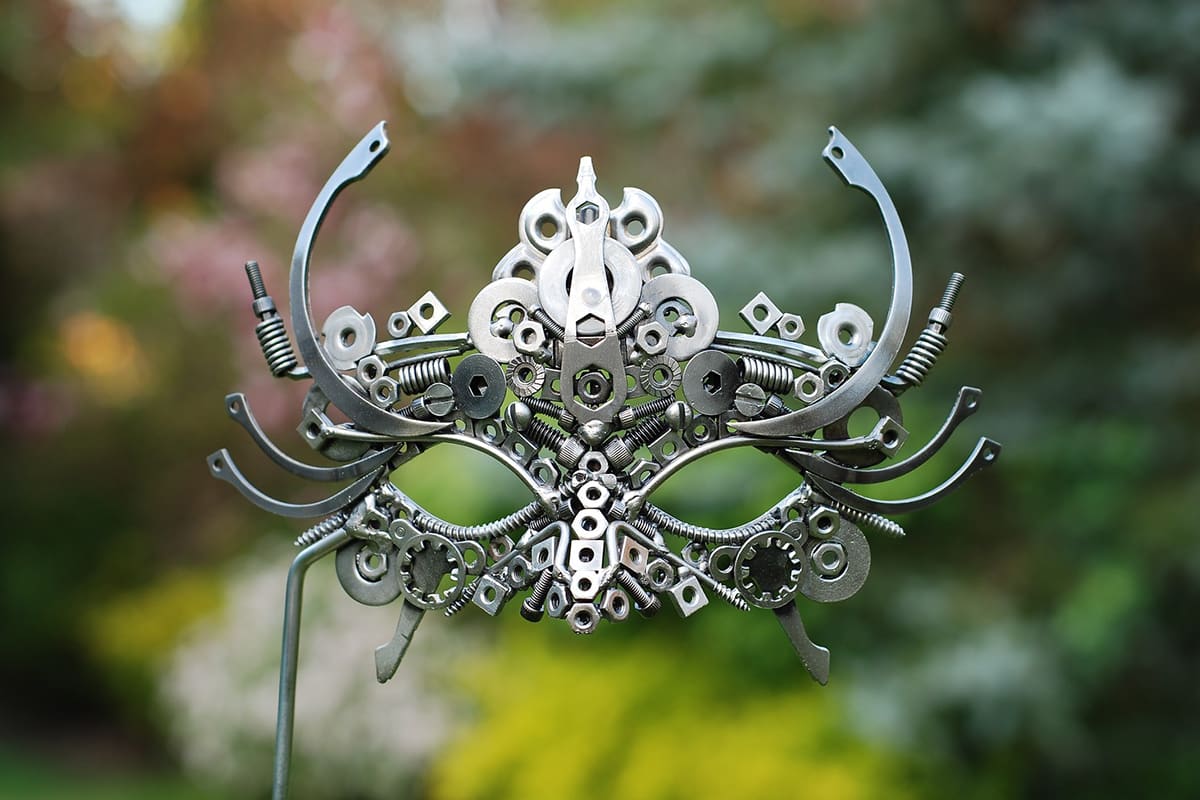
What sort of challenges does working with reclaimed materials present?
This type of work limits me to using only what I have on hand. Sometimes I think about how much easier my job would be if I could go out and buy a specific piece I may need. Instead, if I can’t find the perfect piece in my piles, I have to make it.
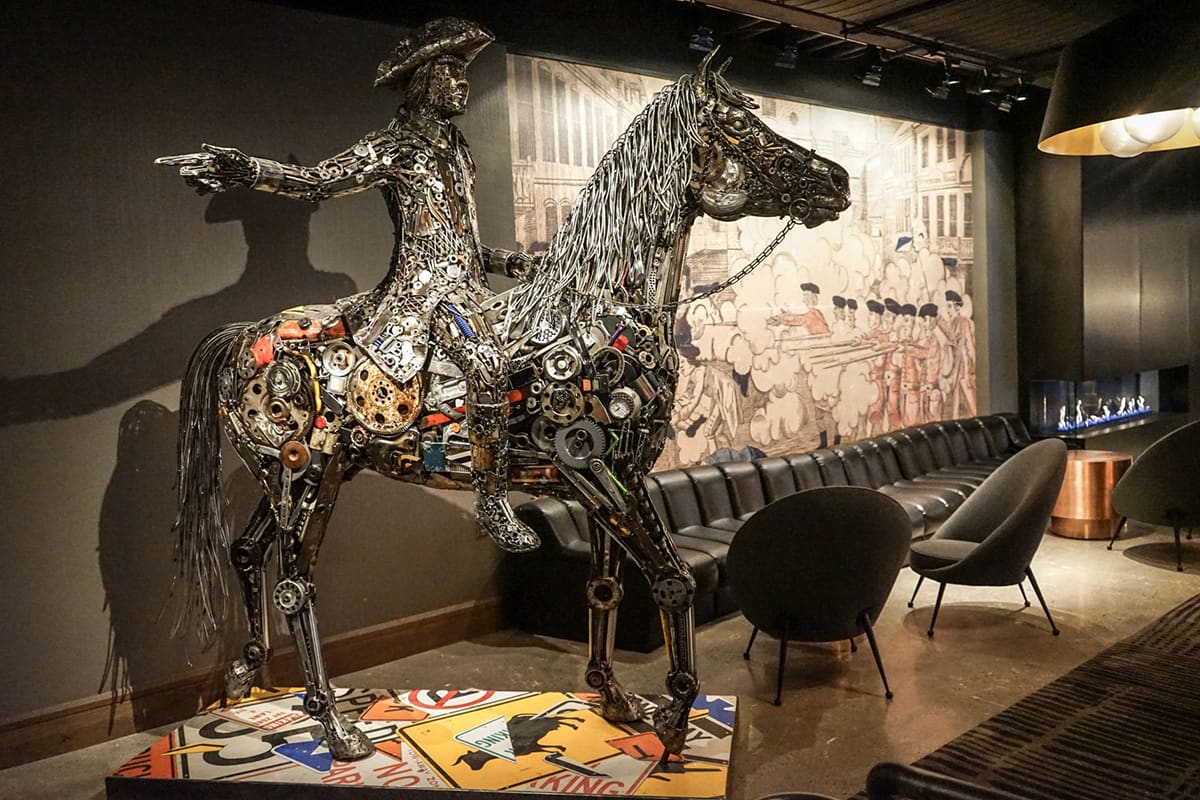
In addition to being works of art, do you see your pieces as political/environmental statements?
I do, yes. I think that by design, my sculptures ask us to evaluate the waste created by our consumer culture, and question how we as individuals can do a better job at reusing items we’ve been quick to throw out, which end up in landfills that are detrimental to our planet’s health.
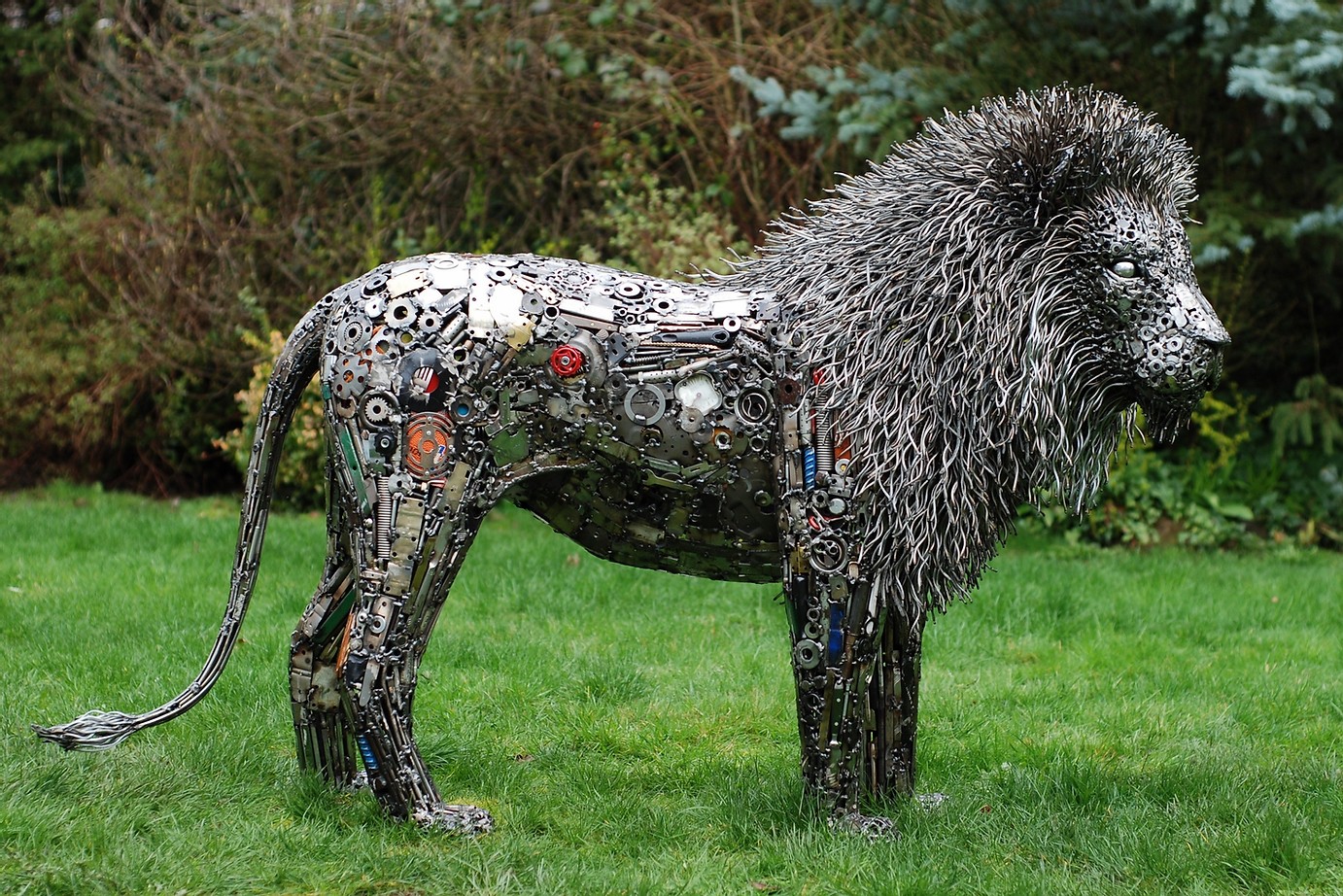
Can you tell us about some of your favorite projects?
I really enjoy making musical instruments. Some of my favorites were a trumpet and a saxophone I made a few years back. The distinct shapes and curves of those pieces were fun to work on. People always ask me if they play, which is a huge compliment because it means I got them to look right.
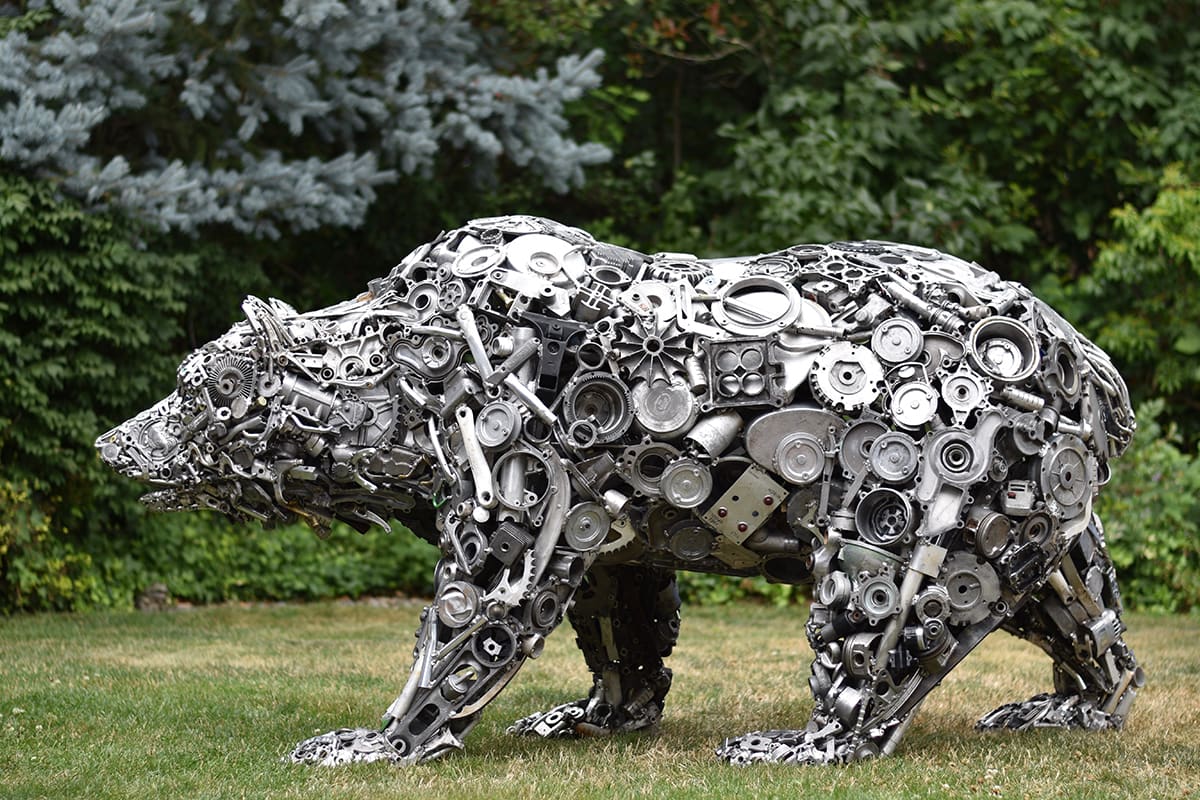
Are there any sculptures you couldn’t bear to part with?
No, but I did have a harder time parting with sculptures early on in my career when they were created from my mind with no guaranteed owner. As I’ve shifted to commissioned work, it feels like the sculptures already belong to the clients I’m making them for, so they’re easier to let go of.
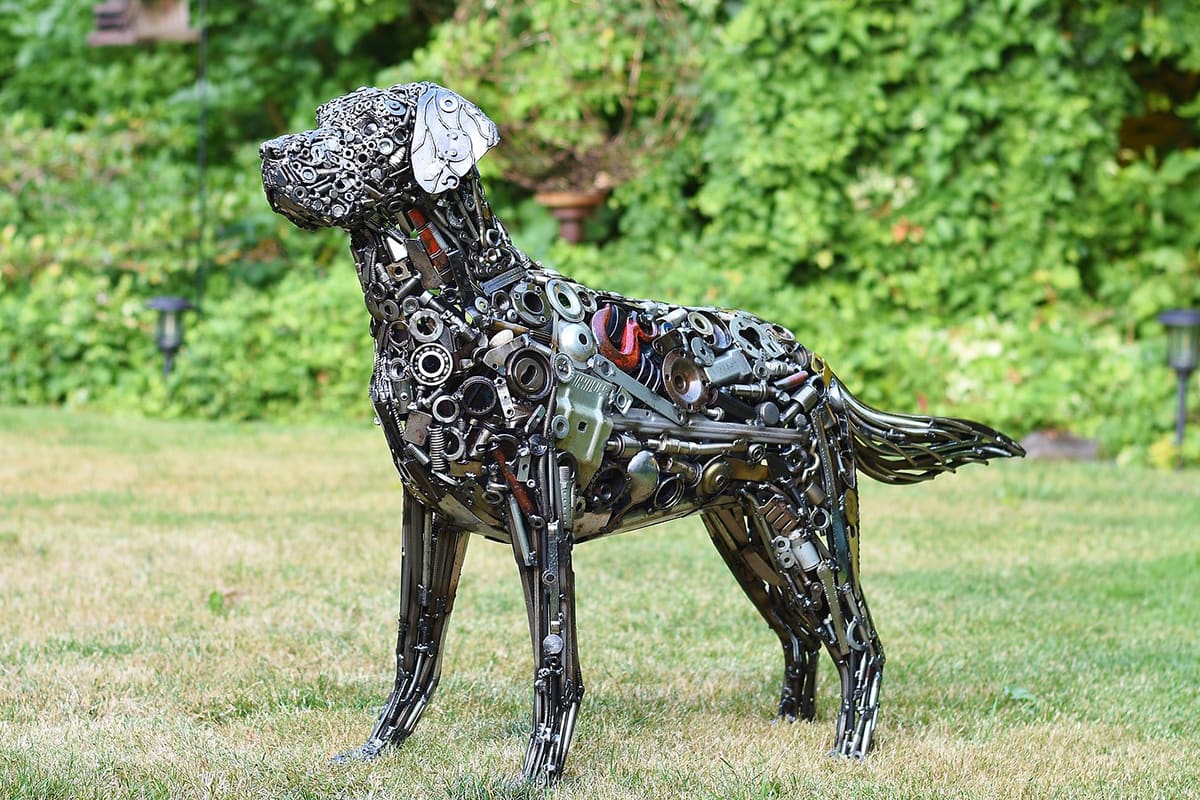
Why so many dogs? Even though they all have different names, they look like they’re from the same family. Are they based on a particular dog you love?
I started making dogs because Portland, OR (where I began selling my work) is a very dog-friendly city. People really love dogs here, and the dog sculptures would consistently sell out. Then people started commissioning their own dogs. The lab-style dog happens to be the most popular request, but I really enjoy making all breeds of dogs.
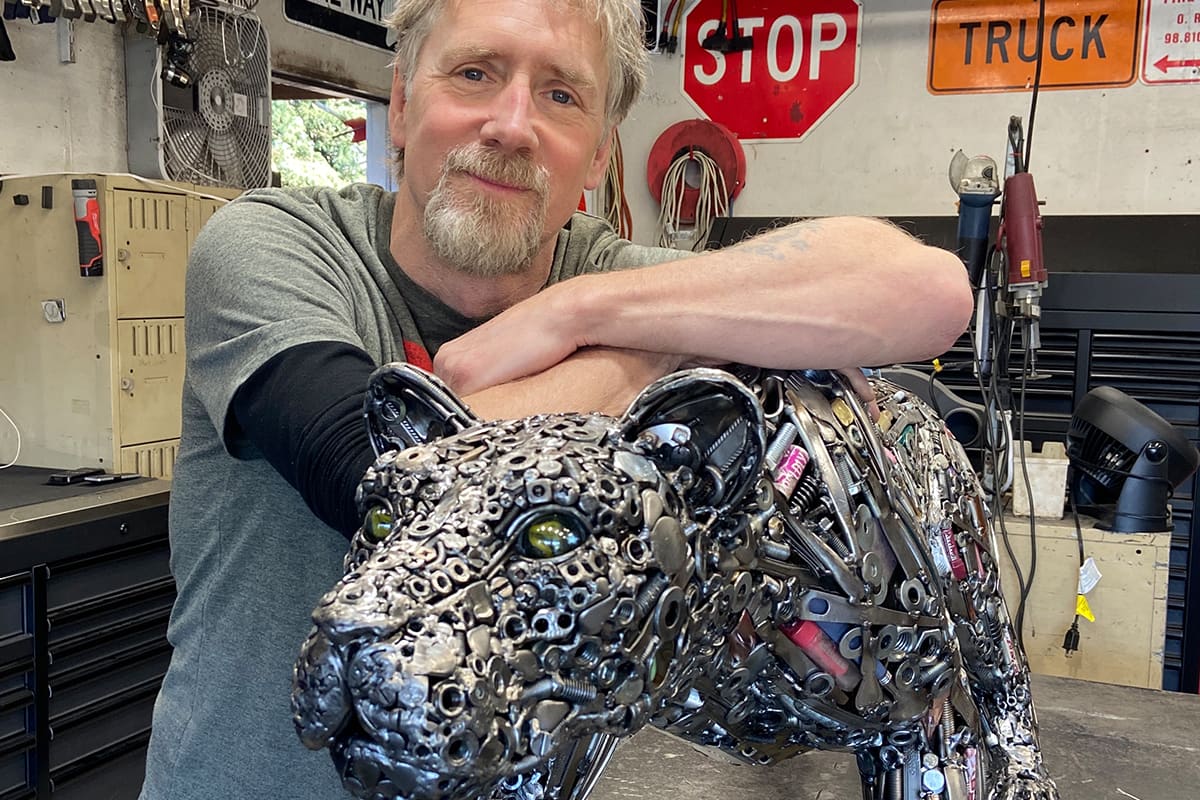
Can you tell us about the environmental impact of so much metal ending up in landfills? How much do you think you’ve prevented from ending up there?
When scrap metal ends up in landfills, it can leak pretty dangerous chemicals into nearby soil and water supplies, which is damaging to the natural habitats of the animals that depend on those resources. Including us! Over the course of 20 years, I’ve probably kept about 20–30 tons of metal out of landfills.
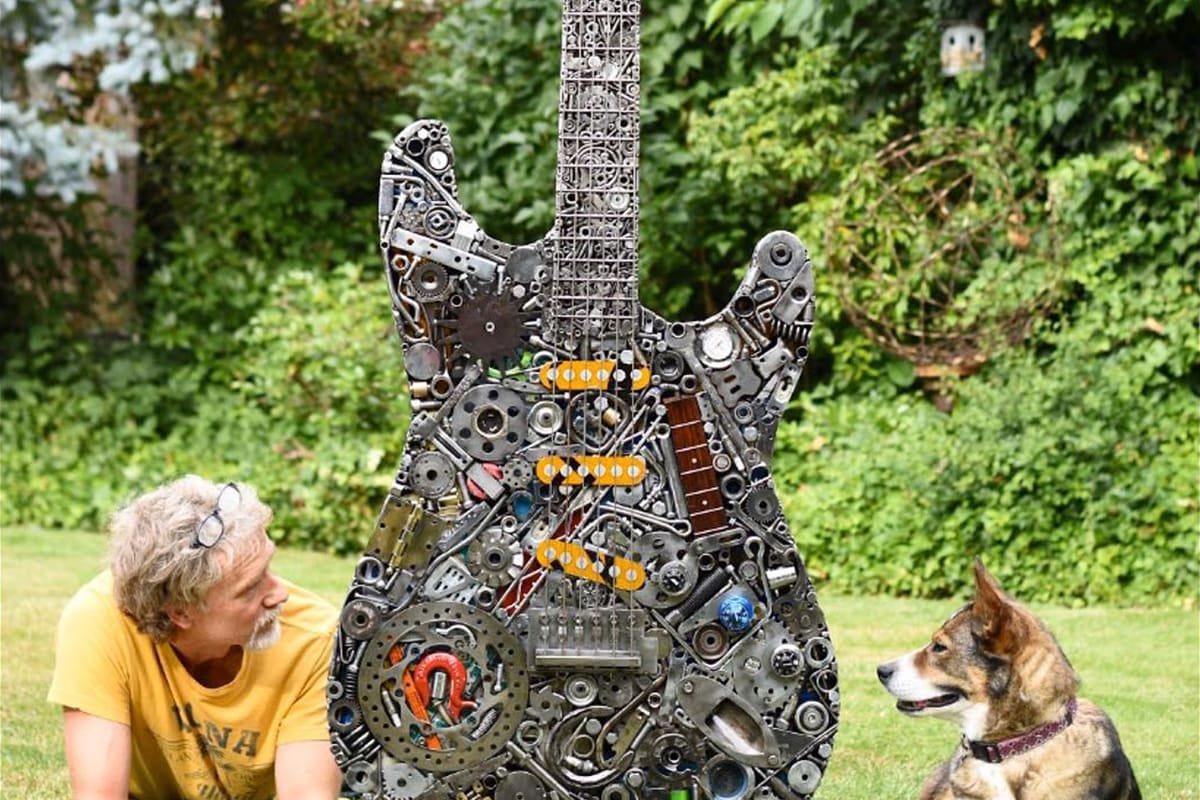
What are you currently working on?
I just finished up a 7.5 ft H guitar sculpture for the Hard Rock Hotel in Dublin, and am now shifting gears to a running dog for a public park in Dallas, and a large wine bottle for a vineyard in Napa Valley.

